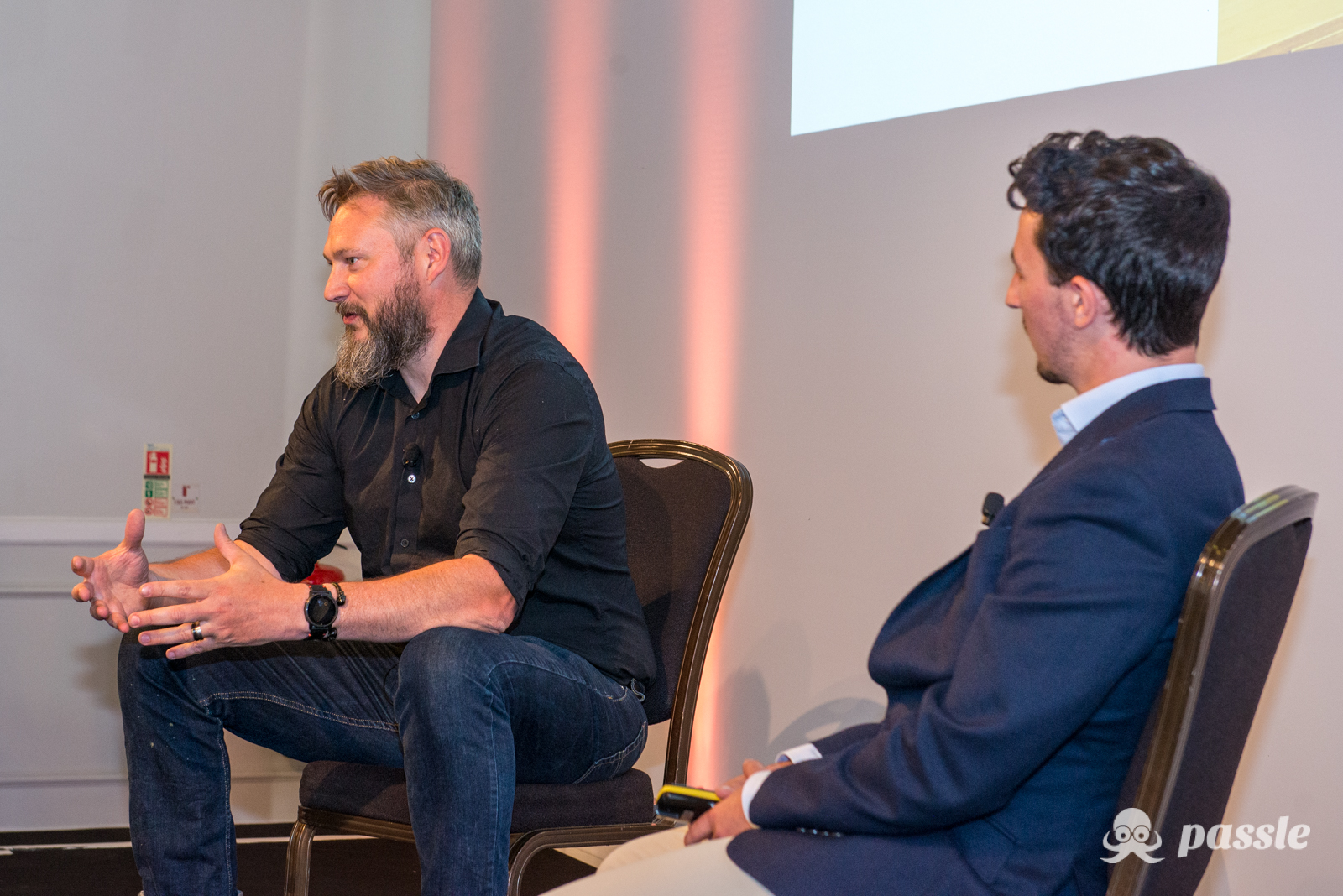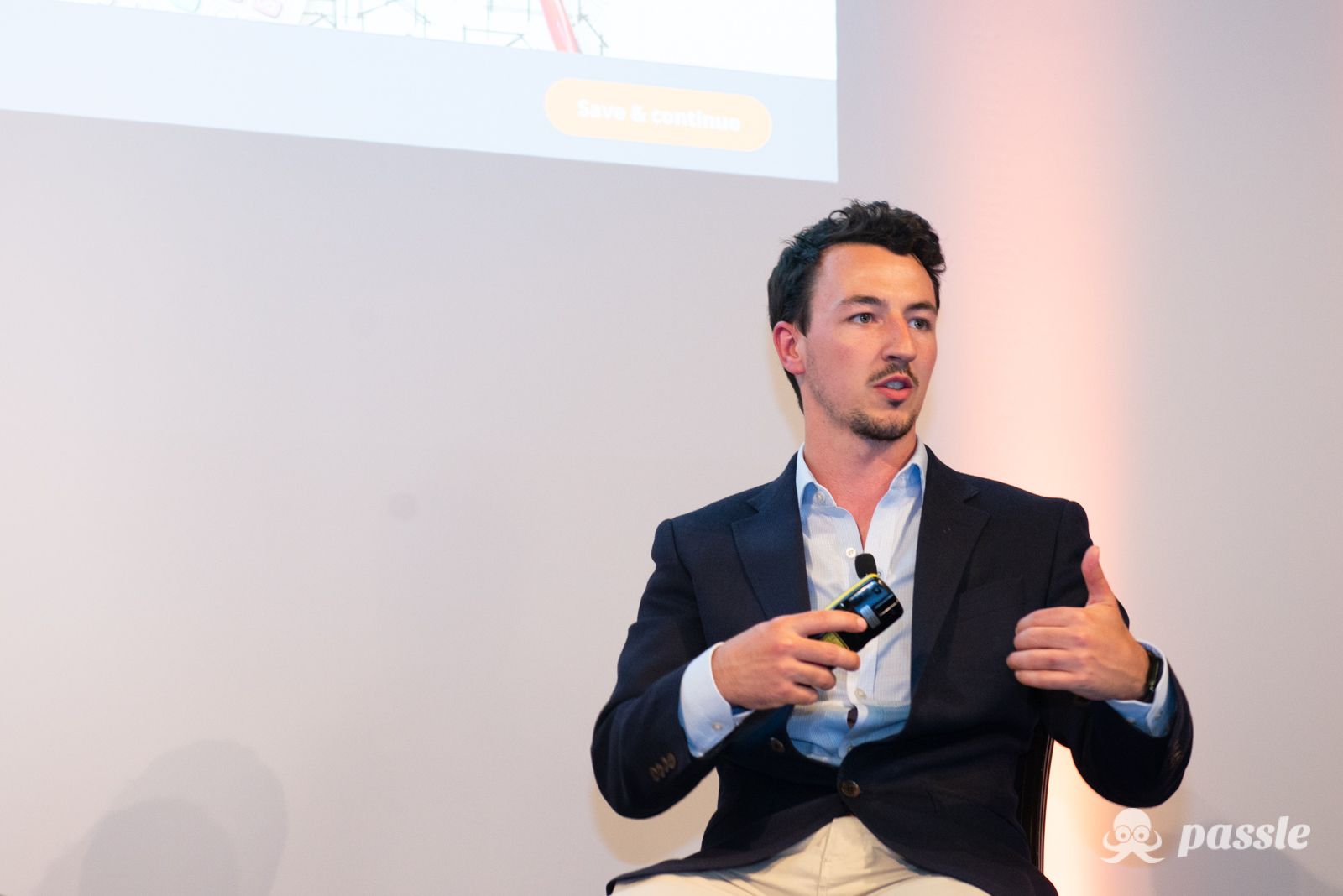I tremendously enjoyed presenting with Barney O'Kelly, Head of Digital Marketing at AlixPartners during Passle's CMOSeries Live event.
We inherited somewhat of a loaded gun after it was decided that there had to be a presentation covering the topic of AI in Professional Services Marketing.
It would have been easy to pack a presentation filled with buzzwords and wax lyrical about why firms need to harness the exponential capabilities of generative AI.
Instead, we focused on making the session an open discussion structured around the following:
- Where are we at as an industry using generative AI in marketing?
- What is the Reality vs the Misconceptions?
- Where are we seeing the benefit?
- What should we be doing now?
1. WHERE ARE WE AT AS AN INDUSTRY?
Speaking to several CMOs and legal marketers, there is a growing sense that if you’re not systemising the use of AI in your marketing function then you are starting to lag behind. Aside from generative AI (GAI) being sensationalized, there is growing pressure from internal sources with lawyers/business leaders challenging marketing to be more efficient and “do more” with technology.
This was certainly the consensus with our audience where a lot of folks have dabbled with using generative AI across a range of use cases. However, instances of successful firmwide AI-enhanced applications were non-existent.
Taking a step back, Barney observed why we are doing what we are doing in the first place as marketers. When it comes to content marketing, if our goals are efficiency and more content, then perhaps there is a place for outsourcing your content creation with tools like ChatGPT. If instead, we are trying to achieve anything remotely human with our digital content, then we cannot expect GAI to "replace" the human input.
In professional services marketing we are trying to elevate the personal brands of the experts across the business. The authenticity element is critical. Rather than coming into content marketing with the expectation of "replacing" human input, we should instead be looking at how we can "augment" and "enhance" these processes. The shift in mindset is likely to position your team in ways that add value across the business and drive the desired outcomes.
2. THE REALITY VS THE MISCONCEPTIONS
There is one very harsh reality that you cannot ignore generative AI as a marketing team. In a short few months after ChatGPT became publicly available, Grammarly cited that 43% of business professionals reported having used AI tools for work purposes.
There is an enormous risk if you are not equipped to handle the scenario of your authors outsourcing their writing to generative AI. One audience member had explained a team of lawyers in their firm had been using AI to write their thought leadership without letting the marketing team know. There was another who had shared JasperAI was being used to help lawyers generate a first draft for their content. Whilst this had started out as a useful launching point for getting lawyers more engaged in the thought leadership process, without thorough fact-checking, a post ended up being published with factual inaccuracies.
Therefore, as a marketing team, you cannot be a passenger in watching this all play out. You need to be proactive and think about your internal approach to these technologies. If you haven't already, start to document and create use policies that set clear rules of engagement. You need to highlight when it is applicable to use AI vs if/when it is explicitly not appropriate to use these tools. It was agreed that internal training will become similar to how firms are currently approaching training on the use of things like social media. We can apply common sense but we also have to account for the worst-case scenarios.
3. WHERE ARE WE SEEING THE BENEFIT?
Amongst all the doom and gloom about AI replacing jobs, it is actually more likely in the foreseeable that marketing teams are going to find use cases that empower them to drive better results. Particularly with manual, mundane and repeatable exercises: think data clean up in CRMs, modelling marketing data in spreadsheets, personalized client campaigns, trigger-based BD nurturing, generating image-based content, better transcriptions for things like podcasts, and translation of digital content.
From Passle's perspective, we launched our AI Beta Program in March of this year. Focused around a few use cases, it's been interesting to observe the takeup and feedback. Naturally, we were excited to incorporate an AI-support content drafting service to streamline the thought leadership process. Whilst there has been a lot of optimism around this, with a number of citations that the functionality is "cool", the adoption from a thought leadership process has been underwhelming. In retrospect, it makes sense and reminds us of where the value of thought leadership resides. If it was easy to outsource the production of thought leadership, then we would have already seen ghostwriting takeoff. However, we know as soon as you remove the authentic input of your experts from the content process, then you will not be successful. There are, however, other content types that can be accelerated by the use of GAI. Think about firm news posts, press releases, and social media content where less nuance is required. In these cases, GAI programs can very much be trained to assist with the generation of these forms of content.
AI for Content Summaries
There are two sides to this:
- Using AI to summarise long pieces of content and documents. Think about pages that you scan rather than read (for either your marketing teams OR your attorneys) to get quick takes. AI can be used to do this and potentially provide your authors with key talking points. It will speed up our ability to consume insight and information.
- Using AI to summarise your own pieces of content. Passle developed a "Quick Share" feature for LinkedIn in a bid to make the sharing process a lot easier for lawyers.
AI for Governance & Approval
Again, there are a few use cases connected to this output:
- Removing manual conflict checks - Passle is currently working with clients on building these capabilities that automatically flag when clients or certain topics are referenced. We are going a step further to not only flag when these are being referenced but also the sentiment of how they're referenced
- Improved spell-checkers and writing recommendations - whilst spell-checkers are nothing new, tools like Grammarly are built using AI. Passle is in the process of testing an integration with Grammarly for content writing.
- AI content detectors - there are a number of free services you can use to check if your content is being generated by AI. This is important as firms navigate the instances where authors may be using AI without informing marketing teams.
Enhanced Imagery
If you're finding that certain topics your firm is publishing about are seeing the same repertoire of images, then AI can help with this. Barney talked about the bank of "Retail" images that his team had exhausted for their thought leadership. At Passle we've worked on an algorithm that indexes a much more sophisticated search criteria for Getty Images based on the content of your post. This way you can start to get varied and more relevant results suggested to your authors, than a simple search term for something like "retail". AI can also be used to generate new & unique images for your firm.
4. WHAT SHOULD WE BE DOING NOW?
Challenge your Network & Technology Partners
The reason for listing all of the use cases we've been working on at Passle is to show how technology firms are aptly situated to develop new AI-powered capabilities. For many firms, you may have the capacity to develop tools in-house and this is certainly an option for firm-specific applications. However, for more general use cases, go and speak with your technology vendors. Find out more about their product roadmap. As clients, you are in a position of power to drive the product pipeline. Learn what's coming down the line and make sure these capabilities are suited to your requirements.
Develop a Firm Use Policy for AI
If you haven't already, this should be an action to get going with. As these tools are open-source and self-serve, you can't afford to be passive in setting rules of engagement. Go and understand how constituents across the business are already leveraging GAI. Marketing needs to be involved in shaping the use cases particularly when connecting to content and BD.
Be Curious & Open Minded
Look to learn from those within your business who are already using AI. Be inquisitive about where you might find uses to improve your own role. Seek to learn from others. And share what you're seeing is and isn't working.
Stay Human - It's What Makes Us Interesting
Speaking to Barney a lot about this topic, this was such an obvious takeaway to leave everyone with. The reason this presentation was of interest to the audience (at least we hope it was!) is that we're able to share what we've seen, our own experiences and anecdotes, and my favourite part was hearing from the audience. The human aspect is our biggest differentiator. In any service-line, there are plenty of options - the human side and emotional aspect of acquiring professional services is a massive factor in why you choose to work with one firm other another. Let's make sure we don't lose sight of this!








/Passle/53d0c8edb00e7e0540c9b34b/MediaLibrary/Images/2025-06-24-15-50-59-531-685ac963d81bf11b7522dd8e.png)
/Passle/53d0c8edb00e7e0540c9b34b/MediaLibrary/Images/2025-12-18-10-52-26-493-6943dceac311190ddba15d64.jpg)
/Passle/53d0c8edb00e7e0540c9b34b/MediaLibrary/Images/2025-12-16-15-16-25-843-694177c9190f803408651724.jpg)
/Passle/53d0c8edb00e7e0540c9b34b/MediaLibrary/Images/2025-12-09-11-05-31-284-6938027b1b6076d9d8980f1e.png)
/Passle/53d0c8edb00e7e0540c9b34b/MediaLibrary/Images/2025-12-04-20-27-35-105-6931eeb7f170698845c6b19b.jpg)



